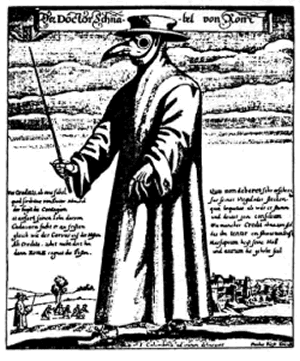Science of Conflict
Bubonic Plague
Europe, 1349 bands of men,
wearing white, hooded robes marked with a red cross, moved about the
country side attempting to save people from the ravages of the Black
Death by whipping themselves in ritual public ceremonies.
The Flagellant Brahren, as they were known, believed that the plague
is a punishment from God for human sin and that by punishing themselves
they can show mankind's repentance. They traveled in large groups, up
to 500 men, singing hymns and crying while they beat themselves with
iron studded scourges.
In 1984, Alexandre Yersin isolated the plague bacteria and developed an antiserum to combat the disease. He also noted the connection with flea infested rats. In his memory, the bacterium causing the disease was named Yersinia pestis.


- bubonic plague is caused by a bite, from an infected flea, on the skin. The bacterium spreads along the lymph system inflaming the lymph nodes and causing the recognizable bubo. Bacteria soon find their way into the blood stream where they infect every major organ of the body.
- pneumatic plague results from directly inhaling the bacteria as occurs when in close contact with an infected person. Bronchopneumonia and septicemia soon result.
- septicemic plague where the bacteria enters the blood directly and bypasses the lymph and the formation of a bubo.
Define the following terms:
- septicemia:
- pneumonia:
- lymph system:.
- pandemic:
- epidemic.
Why is the plague considered a pandemic?
What is the difference between
an epidemic and a pandemic?
Between 1650 and 1665 the population of London increased three fold. Describe
the conditions and give reasons why the disease spread so quickly.
There were three major epidemics
- in the 6th, 14th, and 17th centuries
with close to 140 million deaths.Why was the mortality rate so high?
Can an outbreak of the plague occur in modern times? Explain.
The Bubonic plague was considered a global problem. How was the plague able to spread from country to country?